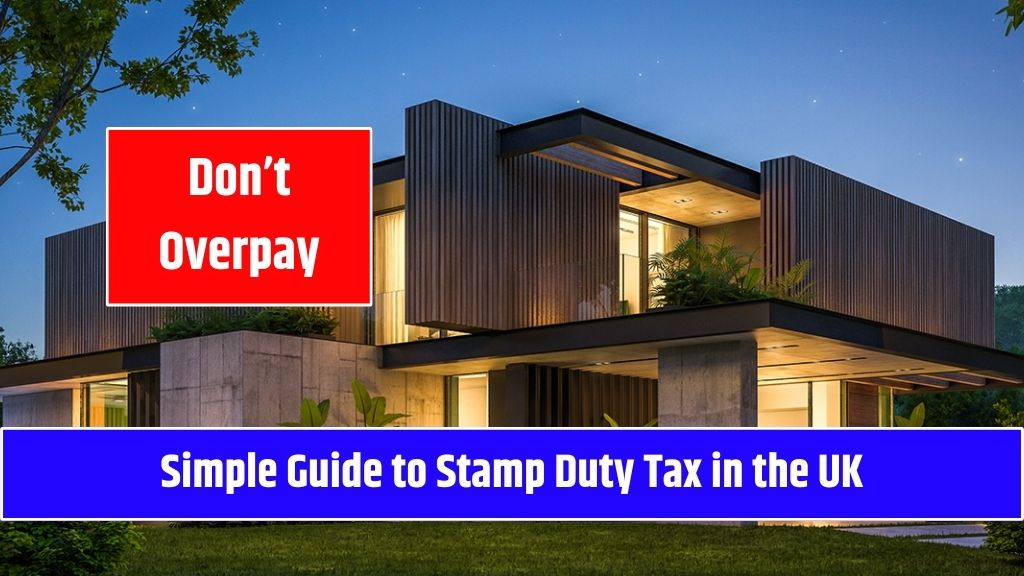Buying a property or land in England or Northern Ireland? You might need to pay Stamp Duty Land Tax (SDLT). This tax applies when you buy property over a certain price, and the rules can vary depending on your situation. Let’s break down what SDLT is, when you need to pay it, how much it costs, and how to pay it.
What Is Stamp Duty Land Tax (SDLT)?
SDLT is a tax you must pay when you buy property or land above a set price in England or Northern Ireland. It applies to different types of property purchases, including freehold, leasehold, and shared ownership schemes. The amount you pay depends on the property’s value and your buyer status.
SDLT in Other Parts of the UK
The rules for property tax differ across the UK:
- Scotland: You pay the Land and Buildings Transaction Tax.
- Wales: You pay the Land Transaction Tax for property sales completed on or after 1 April 2018.
When Do You Pay SDLT?
You need to pay SDLT in these situations:
- Buying a freehold property.
- Purchasing a new or existing leasehold.
- Investing in a shared ownership scheme.
- Receiving property or land in exchange for payment, like taking on a mortgage or buying a share in a house.
SDLT Thresholds: When Does the Tax Apply?
SDLT only applies when the property price exceeds certain thresholds. Here are the current and upcoming thresholds:
SDLT Thresholds Until 31 March 2025:
- Residential properties: £250,000 or more.
- First-time buyers (for properties up to £625,000): £425,000 or more.
- Non-residential properties/land: £150,000 or more.
SDLT Thresholds From 1 April 2025:
- Residential properties: £125,000 or more.
- First-time buyers (for properties up to £500,000): £300,000 or more.
- Non-residential properties/land: £150,000 or more.
Tip: If your property costs less than these thresholds, you don’t need to pay SDLT.
How Much SDLT Will You Pay?
The amount you owe depends on:
- Property type: Residential, non-residential, or mixed-use.
- Buyer type: First-time buyer, additional property owner, or non-UK resident.
- Eligibility for reliefs or exemptions: Some buyers can get tax relief.
Example: First-time buyers pay less tax than those buying a second home. You can use the HMRC SDLT calculator to estimate your tax.
What Counts as the Property Value?
SDLT is usually based on the purchase price. However, the “consideration” (the total taxable value) might also include:
- Goods like furniture or appliances.
- Services or construction work provided by the seller.
- Debt release or transfer, such as an outstanding mortgage.
How to Pay SDLT
Here’s a simple guide to paying your SDLT:
- Complete your property purchase.
- File an SDLT return with HMRC within 14 days of completion.
- Pay the tax. If you use a solicitor or conveyancer, they’ll typically handle this process for you and include the tax in their bill.
Stamp Duty Land Tax (SDLT) is an essential part of property buying in England and Northern Ireland. Understanding the thresholds, calculating your tax correctly, and paying on time helps you avoid penalties. If you’re unsure, HMRC provides tools and guidance, or you can consult a property expert.
FAQ’s
What is Stamp Duty Land Tax (SDLT)?
SDLT is a tax you pay when you buy property or land over a certain value in England or Northern Ireland.
Do first-time buyers get any SDLT benefits?
Yes, first-time buyers pay SDLT only on properties above £425,000 (until March 2025) or £300,000 (from April 2025).
When is SDLT due?
You must pay SDLT and submit the return within 14 days of completing the property purchase.
How can I calculate my SDLT?
Use HMRC’s SDLT calculator to estimate your tax based on the property’s price and your buyer status.
What happens if I don’t pay SDLT on time?
Late payments may result in penalties and interest charges.
